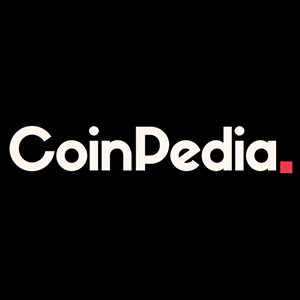Cryptocurrency Market Cap Soars: An Unprecedented $4 Trillion Milestone Achieved
7 min read
BitcoinWorld Cryptocurrency Market Cap Soars: An Unprecedented $4 Trillion Milestone Achieved The cryptocurrency world is buzzing with excitement as a monumental milestone has been achieved: the total cryptocurrency market cap has officially soared past an unprecedented $4 trillion. This isn’t just a number; it’s a powerful testament to the growing mainstream adoption, institutional confidence, and relentless innovation within the digital asset space. According to CoinGecko data, this incredible surge highlights a pivotal moment in the financial landscape, signaling a new era for digital currencies. But what does this massive valuation truly signify, and which digital giants are leading the charge? The Unprecedented Rise of the Cryptocurrency Market Cap For years, skeptics questioned the viability of cryptocurrencies, dismissing them as speculative bubbles. Yet, here we are, witnessing the total cryptocurrency market cap not just reaching, but decisively surpassing the $4 trillion mark. This achievement underscores a profound shift in global finance, demonstrating that digital assets are no longer a niche interest but a significant and evolving asset class. This journey from obscurity to a multi-trillion-dollar industry has been fueled by several factors: Increasing Mainstream Acceptance: More businesses, payment processors, and even governments are exploring or integrating crypto. Institutional Influx: Major financial institutions, hedge funds, and corporations are allocating significant capital to digital assets. Technological Innovation: Continuous development in blockchain technology, including decentralized finance (DeFi), non-fungible tokens (NFTs), and Web3 applications, is expanding crypto’s utility. Macroeconomic Factors: As traditional markets face inflation and uncertainty, many view cryptocurrencies, particularly Bitcoin, as a potential hedge or store of value. This $4 trillion valuation reflects a collective belief in the future of decentralized finance and the underlying technology. It’s a validation of the vision that began with Bitcoin over a decade ago. Decoding Bitcoin’s Dominance: What Drives Its Market Share? At the heart of this colossal market valuation, Bitcoin (BTC) continues to reign supreme, contributing a staggering 59.9% of the total cryptocurrency market cap . This substantial Bitcoin market share solidifies its position as the undisputed king of crypto. But why does Bitcoin command such a significant portion of the market? Bitcoin’s dominance stems from a combination of factors: First-Mover Advantage: As the original cryptocurrency, Bitcoin enjoys unparalleled brand recognition and trust. “Digital Gold” Narrative: Many investors view Bitcoin as a store of value, akin to digital gold, especially in times of economic uncertainty. Its finite supply (21 million coins) contributes to this scarcity narrative. Institutional Adoption: The approval of Bitcoin spot ETFs in major markets has opened doors for traditional investors to gain exposure, significantly boosting its liquidity and perceived legitimacy. Network Effect: Bitcoin boasts the largest and most secure blockchain network, with a vast ecosystem of miners, developers, and users. Halving Cycles: The periodic halving events, which reduce the supply of new Bitcoins, historically lead to price appreciation, further reinforcing its value proposition. The consistent strength of Bitcoin’s market share acts as a barometer for the health of the broader crypto market. Its movements often dictate the overall sentiment, with a strong BTC performance frequently paving the way for altcoin rallies. Ethereum’s Ascent: How Does Its Market Share Impact the Ecosystem? While Bitcoin holds the lion’s share, Ethereum (ETH) stands as the second most influential cryptocurrency, accounting for a significant 10.7% of the total cryptocurrency market cap . Ethereum’s role extends far beyond just a digital currency; it is the foundational layer for the vast majority of the decentralized web. Its substantial Ethereum market share is a direct reflection of its utility and innovation. Ethereum’s impact on the crypto ecosystem is profound due to: Smart Contract Functionality: Ethereum pioneered smart contracts, self-executing contracts with the terms of the agreement directly written into code. This innovation enabled the creation of decentralized applications (dApps). DeFi Hub: The vast majority of decentralized finance (DeFi) protocols, which aim to replicate traditional financial services without intermediaries, are built on Ethereum. This includes lending platforms, decentralized exchanges (DEXs), and stablecoins. NFT Powerhouse: Ethereum is the leading blockchain for non-fungible tokens (NFTs), digital assets representing ownership of unique items. The booming NFT market has significantly contributed to Ethereum’s value. Constant Evolution (Ethereum 2.0/The Merge): Ethereum’s transition from Proof-of-Work (PoW) to Proof-of-Stake (PoS) with “The Merge” and subsequent upgrades (like Shanghai) have improved its energy efficiency, scalability, and security, making it more attractive for developers and users alike. Ethereum’s vibrant developer community and its critical role in enabling the DeFi and NFT sectors make its market share a key indicator of the health and innovation within the broader decentralized ecosystem. Beyond BTC and ETH: Exploring the Broader Total Crypto Market While Bitcoin and Ethereum dominate the headlines and a significant portion of the valuation, the remaining percentage of the $4 trillion market cap is distributed across thousands of other digital assets, collectively forming the diverse and dynamic total crypto market . This vast ecosystem includes a wide array of altcoins, each with its unique use case and technological approach. The diversity within the broader market is immense: Layer 1 Blockchains: Competitors to Ethereum like Solana, Avalanche, Cardano, and Polkadot, aiming to offer faster transactions or lower fees. Stablecoins: Cryptocurrencies pegged to a stable asset like the US dollar (e.g., USDT, USDC), crucial for liquidity and reducing volatility in trading. DeFi Tokens: Governance tokens for various decentralized finance protocols, giving holders a say in the project’s future. Gaming and Metaverse Tokens: Digital assets used within blockchain-based games and virtual worlds. Privacy Coins: Cryptocurrencies designed for enhanced anonymity in transactions (e.g., Monero, Zcash). Meme Coins: Cryptocurrencies often created as a joke or cultural phenomenon, gaining value through community hype (e.g., Dogecoin, Shiba Inu). The growth of these diverse sectors indicates a maturing market where innovation is not confined to the top two players. This broad participation signifies a healthy and expanding ecosystem, offering a multitude of investment opportunities and technological advancements that contribute to the overall cryptocurrency market cap . What Does This Crypto Market Analysis Mean for Investors? The $4 trillion milestone is undoubtedly exciting, but what are the practical implications for current and prospective investors? A thorough crypto market analysis reveals both opportunities and considerations that require careful attention. Opportunities: Validation and Legitimacy: The sheer size of the market provides further validation, potentially attracting more institutional and retail investors. Diversification Potential: Beyond BTC and ETH, the vast array of altcoins offers opportunities for diversification across different sectors (DeFi, NFTs, gaming, etc.). Technological Advancements: Continuous innovation in scalability, security, and interoperability promises a more robust and efficient future for blockchain technology. Considerations: Volatility: Despite its growth, the crypto market remains highly volatile. Price swings can be dramatic and rapid. Regulatory Uncertainty: The regulatory landscape for cryptocurrencies is still evolving globally, which can introduce unpredictability. Security Risks: Hacks, scams, and phishing attempts remain a concern. Proper security practices (cold storage, strong passwords, 2FA) are paramount. Market Cycles: The crypto market is known for its distinct bull and bear cycles. Understanding these cycles is crucial for long-term strategy. For investors, this moment calls for a balanced approach. While the potential for growth is evident, so too are the inherent risks. Due diligence, understanding your risk tolerance, and avoiding emotional decisions are key. Top Cryptocurrencies by Market Cap (Illustrative, as of Milestone) Cryptocurrency Approx. Market Share Primary Use Case Bitcoin (BTC) ~60% Store of Value, Digital Gold Ethereum (ETH) ~11% Smart Contracts, DeFi, NFTs Stablecoins (e.g., USDT, USDC) ~5% Price Stability, Trading Liquidity Other Altcoins ~24% Diverse (L1s, Gaming, DeFi, etc.) Note: Percentages are approximate and fluctuate regularly. This table is for illustrative purposes based on the provided data. Challenges and Opportunities in the Evolving Crypto Landscape The journey to a $4 trillion cryptocurrency market cap has not been without its hurdles, and the path forward will undoubtedly present new challenges alongside exciting opportunities. Key Challenges: Regulatory Frameworks: Governments worldwide are grappling with how to regulate cryptocurrencies, which can lead to fragmented rules and uncertainty for businesses and investors. Scalability: As adoption grows, underlying blockchain networks must scale to handle increased transaction volumes without compromising speed or cost. User Experience: For crypto to achieve true mass adoption, user interfaces and processes need to become more intuitive and less complex for the average person. Environmental Concerns: The energy consumption of certain proof-of-work blockchains (like Bitcoin) remains a point of contention, driving innovation towards more sustainable alternatives. Emerging Opportunities: Institutional Integration: Continued integration of crypto into traditional financial systems, including more ETFs, institutional-grade custody solutions, and corporate treasury adoption. Real-World Utility: Expansion of blockchain applications beyond finance, into supply chain management, digital identity, healthcare, and more. Interoperability: Development of technologies that allow different blockchains to communicate and interact seamlessly, fostering a more connected ecosystem. Emerging Markets: Cryptocurrencies offer unique solutions for individuals in countries with unstable economies or limited access to traditional banking services. Navigating these challenges while capitalizing on opportunities will be crucial for the sustained growth and maturity of the crypto market. The Road Ahead: Sustaining the Momentum The achievement of a $4 trillion cryptocurrency market cap is a landmark event, but it’s important to consider what lies ahead for this dynamic asset class. Sustaining this momentum will depend on several factors, including continued innovation, clearer regulatory guidance, and broader public education. The crypto industry is still in its relatively early stages compared to traditional financial markets. However, its rapid evolution, driven by a global community of developers, entrepreneurs, and enthusiasts, suggests a future where digital assets play an even more central role in the global economy. As the technology matures and becomes more accessible, we can expect to see further integration into everyday life, potentially transforming everything from how we transact to how we own digital property. This milestone serves as a powerful reminder of the transformative potential of blockchain technology and the digital asset revolution. It’s a journey that promises continued excitement, innovation, and perhaps, even greater heights. To learn more about the latest crypto market trends, explore our article on key developments shaping Bitcoin and Ethereum price action. This post Cryptocurrency Market Cap Soars: An Unprecedented $4 Trillion Milestone Achieved first appeared on BitcoinWorld and is written by Editorial Team

Source: Bitcoin World



